Role of nuclear architecture in cell identity
In the last years innovative high-throughput-based genome conformational analysis combined with advanced imaging revealed that each chromosome is folded in a highly organized fashion and occupies specific territories in the nucleus, ensuring adequate regulation of gene expression and the maintenance of genome integrity. In recent years, what is emerging is that, besides the plasticity of the chromatin fundamental for fine-regulated process, the nuclear architecture can also influence important cellular processes and is a hallmark of the healthy cell. In several pathologies, the genome organization is often compromised in parallel to an aberrant nuclear morphology, which in some cases is used by cyto-pathologists in their official diagnosis as an indicator of malignancy. However, the hierarchical relationship between nuclear and genome reshaping and molecular mechanisms involved in both aberrant processes are still unknown. My group is devoted in understanding how the genome folding occur in the nuclear space finding the right orientation and nuclear position and how this conformation is then maintained or regulated in dynamic physiological processes in health and in disease. We started studying epigenetic factors known to play a key role in genome folding and function, the Polycomb group (PcG) of proteins. In our recent work we described for the first time a functional and evolutionary conserved crosstalk between the nuclear Lamin A/C and the PcG proteins, required for the maintenance of the PcG repressive functions. We are now committed in understanding the role of PcG/LaminA interplay in physiological processes such as senescence and pathological conditions as cancer and laminopathies, human disorders caused by mutations in Lamin A/C gene. The ultimate objective will be to produce the fundamental knowledge of molecular mechanisms at the basis of genome remodelling in order to stimulate the development of new pharmacological approaches aimed at reverting nuclear aberrations in human disorders.
Projects
- Dissecting the role of nuclear architecture in human CD4+ T cells differentiation
- Role of LaminA/C-Polycomb crosstalk in physiological and pathological muscular senescence
- Identification of epigenome alterations in Hutchinson-Gilford Progeria Syndrome
- Genome reshaping in prostate cancer progression
Team
| Nome / Name | Ruolo / Role | |
|---|---|---|
| Valentina Rosti | Post Doc | rosti@ingm.org |
| Arianna Tisba | Predoctoral Fellow | tisba@ingm.org |
| Marinicla Pascale | Predoctoral Fellow | nicoloso@ingm.org |
| Salma Bousselmi | Research Fellow | bousselmi@ingm.org |
Publications
- Role of Cdkn2a in the Emery–Dreifuss Muscular Dystrophy Cardiac Phenotype
Pegoli G, Milan M, Manti PG, Bianchi A, Lucini F, Santarelli P, Bearzi C, Rizzi R, Lanzuolo C.
Biomolecules. 2021 Apr 6;11(4):538. doi: 10.3390/biom11040538. PMID: 33917623 - Chemotherapy triggers cachexia by deregulating synergetic function of histone-modifying enzymes
Amrute-Nayak M., Pegoli G., Holler T., Lopez-Davila A.J., Lanzuolo C. and Nayak A.
J Cachexia Sarcopenia Muscle 2021 Feb 12 - Formaldehyde-mediated snapshot of nuclear architecture
Lucini F, Bianchi A, Lanzuolo C.
Methods Mol Biol. 2021, 2157:173-195 - SAMMY-seq reveals early alteration of heterochromatin and deregulation of bivalent genes in Hutchinson-Gilford Progeria Syndrome
Sebestyén E, Marullo F, Lucini F, Petrini C, Bianchi A, Valsoni S, Olivieri I, Antonelli L, Gregoretti F, Oliva G, Ferrari F, Lanzuolo C.
Nat Commun. (2020) Dec 8;11(1):6274. - Single Myofiber Isolation and Culture from a Murine Model of Emery-Dreifuss Muscular Dystrophy in Early Post-Natal Development
Pegoli G, Lucini F, Mozzetta C and Lanzuolo C
JoVE. 2020; Published July 1, 2020 - Extracellular Vesicles From Skeletal Muscle Cells Efficiently Promote Myogenesis in Induced Pluripotent Stem Cells
Baci D, Chirivì M, Pace V, Maiullari F, Milan M, Rampin A, Somma P, Presutti D, Garavelli S, Bruno A, Cannata S, Lanzuolo C, Gargioli C, Rizzi R, Bearzi C.
Cells, 2020 Jun 23: E1527 - P2X7 activation enhances skeletal muscle metabolism and regeneration in SOD1G93A mouse model of amyotrophic lateral sclerosis
Fabbrizio P, Apolloni S, Bianchi A, Salvatori I, Valle C, Lanzuolo C, Bendotti C, Nardo G, Volonté C.
Brain Pathol. 2020 Mar; 30(2):272-282. - Dysfunctional polycomb transcriptional repression contributes to Lamin A/C dependent muscular dystrophy
Bianchi A, Mozzetta C, Lucini F, Pegoli G, Valsoni S, Rosti V, Petrini C, Cortesi A, Antonelli L, Gregoretti F, Oliva G, De Bardi M, Rizzi R, Bodega B, Pasini D, Ferrari F, Bearzi C and Lanzuolo C
Journal of Clinical Investigation; 2020 Jan 30 - Elevated TGF β2 serum levels in Emery-Dreifuss Muscular Dystrophy: Implications for myocyte and tenocyte differentiation and fibrogenic processes
Bernasconi P, Carboni N, Ricci G, Siciliano G, Politano L, Maggi L, Mongini T, Vercelli L, Rodolico C, Biagini E, Boriani G, Ruggiero L, Santoro L, Schena E, Prencipe S, Evangelisti C, Pegoraro E, Morandi L, Columbaro M, Lanzuolo C, Sabatelli P, Cavalcante P, Cappelletti C, Bonne G, Muchir A, Lattanzi G.
Nucleus (2018) Jan 1: 292-304 - Mechanotransduction, nuclear architecture and epigenetics in Emery Dreifuss Muscular Dystrophy: tous pour un, un pour tous
Bianchi A, Manti PG, Lucini F and Lanzuolo C
Nucleus (2018); Jan 1: 276-290 - A cytosolic Ezh1 isoform modulates a PRC2-Ezh1 epigenetic adaptive response in postmitotic cells.
Bodega B, Marasca F, Ranzani V, Cherubini A, Della Valle F, Neguembor MV, Wassef M, Zippo A, Lanzuolo C, Pagani M, Orlando V.
Nat Struct Mol Biol (2017) 24:444-452
- Determination of Polycomb Group of Protein Compartmentalization Through Chromatin Fractionation Procedure.
Marasca F, Marullo F, Lanzuolo C.
Methods Mol Biol (2016) 1480:167-80
- Nucleoplasmic Lamin A/C and Polycomb group of proteins: An evolutionarily conserved interplay.
Marullo F, Cesarini E, Antonelli L, Gregoretti F, Oliva G, Lanzuolo C.
Nucleus (2016) 7:103-11
- Lamin A/C sustains PcG protein architecture, maintaining transcriptional repression at target genes.
Cesarini E, Mozzetta C, Marullo F, Gregoretti F, Gargiulo A, Columbaro M, Cortesi A, Antonelli L, Di Pelino S, Squarzoni S, Palacios D, Zippo A, Bodega B, Oliva G, Lanzuolo C.
J Cell Biol (2015) 211:533-51
- PcG-mediated higher-order chromatin structures modulate replication programs at the Drosophila BX-C.
Lo Sardo F, Lanzuolo C, Comoglio F, De Bardi M, Paro R, Orlando V.
PLoS Genet (2013) 9:e1003283
- Concerted epigenetic signatures inheritance at PcG targets through replication.
Lanzuolo C, Lo Sardo F, Orlando V.
Cell Cycle (2012) 11:1296-300
- Memories from the polycomb group proteins.
Lanzuolo C, Orlando V.
Annu Rev Genet (2012) 46:561-89
- PcG complexes set the stage for epigenetic inheritance of gene silencing in early S phase before replication.
Lanzuolo C, Lo Sardo F, Diamantini A, Orlando V.
PLoS Genet (2011) 7:e1002370
- Polycomb response elements mediate the formation of chromosome higher-order structures in the bithorax complex.
Lanzuolo C, Roure V, Dekker J, Bantignies F, Orlando V.
Nat Cell Biol (2007) 9:1167-74
- The finger subdomain of yeast telomerase cooperates with Pif1p to limit telomere elongation.
Eugster A, Lanzuolo C, Bonneton M, Luciano P, Pollice A, Pulitzer JF, Stegberg E, Berthiau AS, Forstemann K, Corda Y, Lingner J, Geli V, Gilson E.
Nat Struct Mol Biol (2006) 13:734-9







